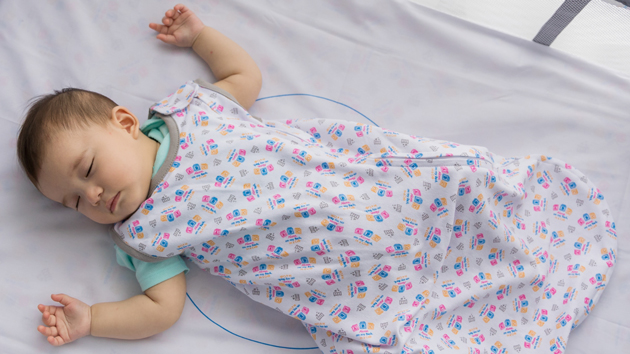Infant Safe Sleep Program
Our Infant Safe Sleep Program offers families with helpful educational resources to reduce the risk of Sudden Infant Death Syndrome (SIDS) and other sleep-related causes of infant death.
The goal of our program is to empower new parents and caregivers with the knowledge they need to establish safe sleep habits for their infants under one year of age.
About Sudden Infant Death Syndrome (SIDS)
- SIDS is a sudden and silent medical disorder that can happen to an infant who seems healthy.
- SIDS is sometimes called “crib death” or “cot death” because it is associated with the time when the baby is sleeping. Cribs themselves don’t cause SIDS, but the baby’s sleep environment can influence sleep-related causes of death.
- SIDS is the leading cause of death among babies between 1 month and 1 year of age.
- According to Oregon Health Authority, about 40 babies die in their sleep every year in Oregon.
What Does Safe Sleep Mean?

A safe sleep environment lowers the risk of all sleep-related infant deaths.
Here are some ways you can help create a safe sleep environment as per the American Academy of Pediatrics Safe Infant Sleep Guidelines:
-
- Back to Sleep, Every Night and Every Nap. Until their first birthday, babies should always sleep on their back. If your baby falls asleep in a car seat, stroller, swing, infant carrier or sling, you should move him or her to a firm sleep surface on his or her back as soon as possible.
- Use a firm sleep surface. Use a crib, bassinet, portable crib or play yard that meets the safety standards of the Consumer Product Safety Commission. Also use a tight-fitting, firm mattress and fitted sheet designed for that mattress.
- Nothing else should be in the crib except the baby: No pillows, toys, stuffed animals, extra blankets or bumper pads. Hands-free swaddling is recommended until babies roll over. After that, a wearable blanket or footed pajamas are safe options.
- Never leave your baby alone on a couch, sofa or armchair. This is an extremely dangerous place for your baby to sleep.
- Share a room with your baby, but don’t share a bed. The American Academy of Pediatrics recommends that all babies sleep in the same room as their parents but not in the same bed for first 6 months of life. Ideally, this should continue until your baby turns 1.
- Do not smoke during pregnancy or after your baby is born. Keep your home and car smoke-free, too.
- Try giving a pacifier at nap time and nighttime. This helps reduce the risk of sudden unexpected infant death or SUID. If the pacifier falls out after your baby falls asleep, you don’t need to put it back in.
- Make sure your baby has awake tummy time every day. Awake tummy time should be supervised by an adult. This helps your baby’s motor development and prevents positional plagiocephaly (flat head).
Download Doernbecher Children’s Hospital’s safe sleep guide, available in the following languages:
Swaddling in 6 steps:
-
-
- Lay a thin baby blanket out like a diamond in front of you.
- Fold the top corner of the blanket down a bit so that the folded corner almost reaches the middle of the blanket.
- Place your infant on their back and center them on the blanket with their arms at their sides, their head just above the folded edge and their shoulders just below it.
- Take one of the side corners of the blanket and fold it over your baby’s shoulder and across his body, making sure to tuck the corner underneath him on the opposite side.
- Then take the bottom corner of the blanket (below your baby’s feet) and fold it up over your baby. If the blanket is large enough that the bottom corner reaches up to (or over) your baby’s face, you can simply fold it back down until their face is no longer covered or bring it over one or the other shoulder and tuck it under them.
- Finally, take the only remaining corner and pull it over your baby’s other shoulder and across their body. Again, tuck this corner snugly under your baby’s opposite side.
-
More Resources
